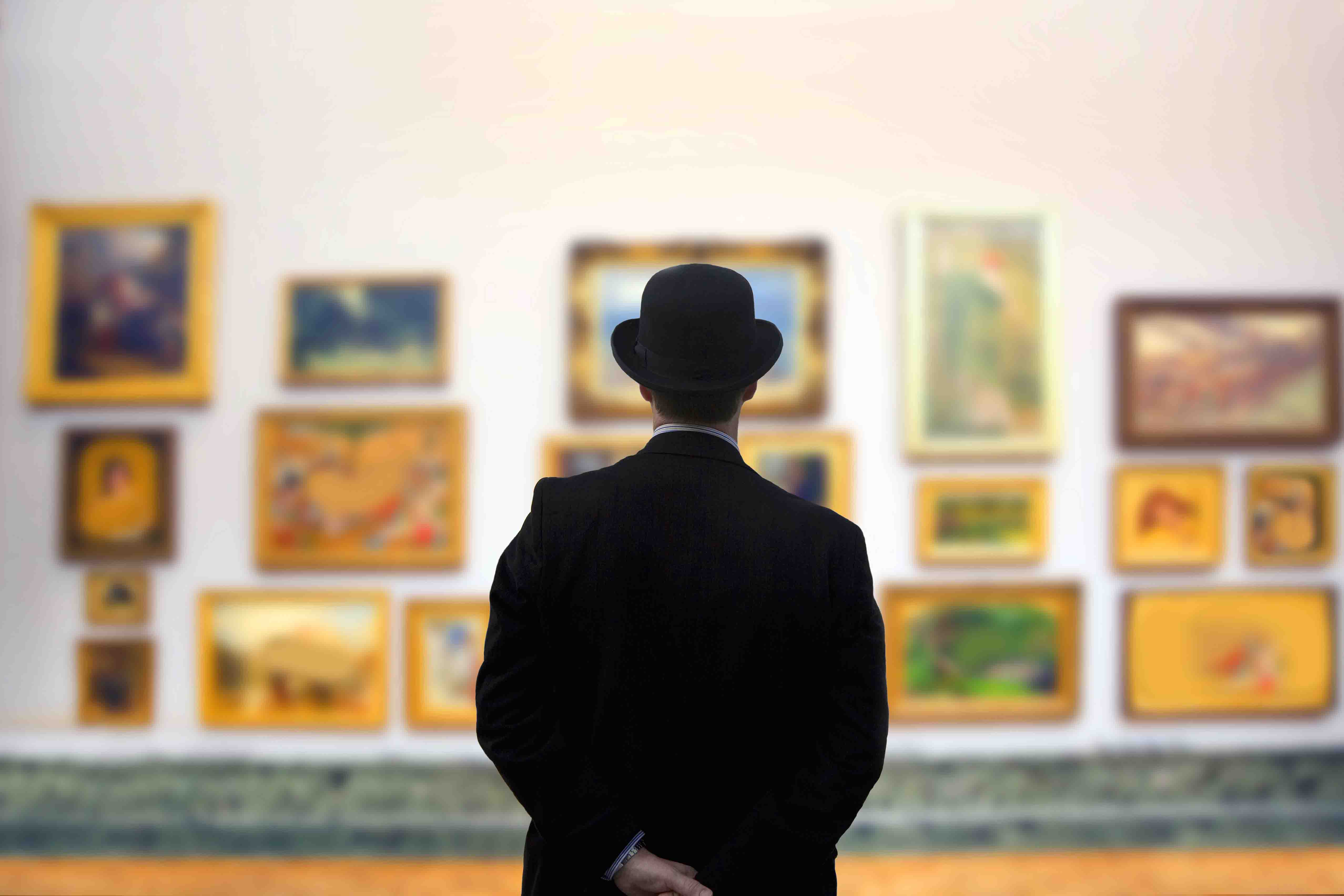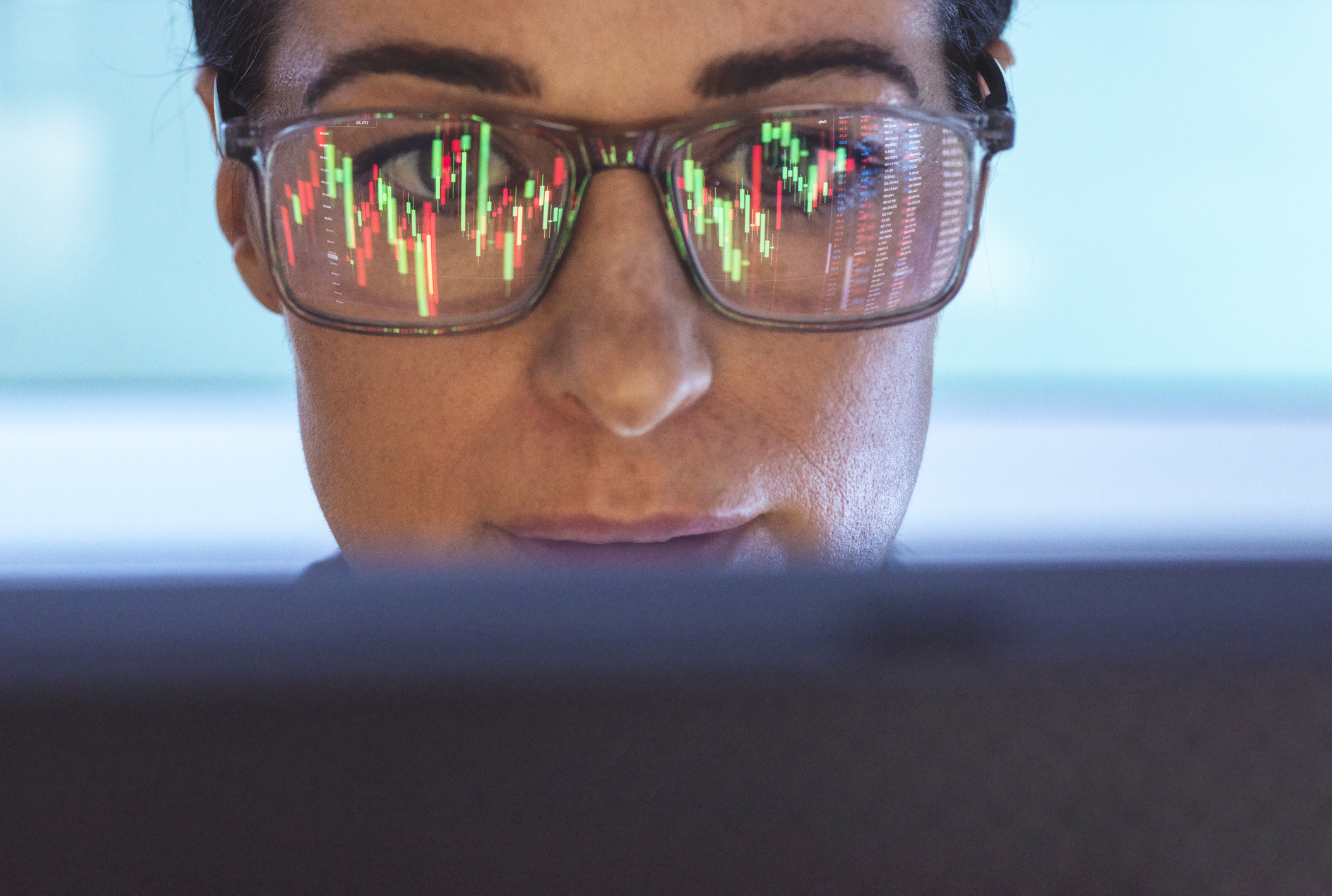Investing in Art: 10 Things You Should Know
Savvy collectors know that investing in art blends an eye for aesthetics with a head for business.


Investing in art may surprise and delight you. Sometimes it’s fine art, but not necessarily what you might expect. Take for instance the $6.2 million that cryptocurrency entrepreneur Justin Sun spent in November for a 25-cent banana duct-taped to a wall, which he then ate. That’s a lot of money for a snack.
“There’s a long history of artists defining or ridiculing what is art,” says the art market analyst Michael Moses, who co-created the Sotheby’s Mei-Moses art index. “When you have an enormous amount of money it doesn’t matter anymore.” He was one of just a few uber-wealthy buyers who splurged big on fine art last fall.
Last year was “as bad as it gets,” Moses says. More than half of the artworks that did sell, did so at a loss. Almost one-in-four pieces remained unsold.

Sign up for Kiplinger’s Free E-Newsletters
Profit and prosper with the best of expert advice on investing, taxes, retirement, personal finance and more - straight to your e-mail.
Profit and prosper with the best of expert advice - straight to your e-mail.
Moses says that part of the reason for the soft patch was “too much supply versus current demand,” he says. But weak markets can be good opportunities for bargains. “Buy when there is blood in the streets,” according to greatly lauded stock investor Warren Buffett. It’s certainly a maxim that has helped many stock investors. Art collectors, too.
You may not be in the seven-to-nine figure art buyer’s club, but if you want to dabble a bit, here are 10 key things you need to know about investing in art:
1. Investing in art does not include collectibles — they aren’t art and won’t make you rich
If one of your relatives has a collection of cute figurines, action figures or commemorative coins, they’re collectibles, not art. Such items are typically produced in editions, which means there are many identical items in households across the country or the world, says Kenneth Needleman, owner and founder of Needleman Fine Art Services in Ridgefield, Conn. “People often don’t understand the market,” he says. “They don’t realize that collectibles typically are not going to appreciate in value.”
2. So what is art?
It can be a painting, an etching or another type of limited print, a ceramic item such as a vase, sculpture carved out of wood or stone, or a statue cast in bronze. However, if someone with little skill produced such items they likely wouldn’t qualify as art. And that’s where it gets tricky.
Needleman says, “Art needs to be unique and or rare.” Some experts would add that they want work that demonstrates skills, and that the product is emotionally moving. That’s backed up by famous and lauded graffiti artist Banksy, who says: "Art should comfort the disturbed and disturb the comfortable."
3. Take time to get some education
Just like investing in stocks takes effort to learn what works and what doesn’t, the same is true when investing in art. Needleman says it makes sense to visit private and public galleries as well as local museums or such cathedrals of art as New York City’s Metropolitan Museum and Museum of Modern Art, the Getty Center in Los Angeles or the National Gallery of Art in Washington, D.C..
Read books about the art you’ve seen. After looking at a lot of art, you’ll start to see features in paintings and sculptures or other items that you would have missed at the beginning, he says. Diving into the art scene and understanding what’s available will help you decide what types of art appeal to you, which might be abstract or pop art or contemporary post war.
4. Can you find a masterpiece in a junk shop?
It’s possible. Jamie MacLeod, a British priest, purchased a painting for £400 ($493) from an antique store in 2012. The next year he took the painting to the UK’s Antiques Roadshow, where an expert identified it as a portrait by the acclaimed 17th century Dutch artist Anthony van Dyck. The piece, which was unfinished, was said to be worth £400,000. “That’s a highly unusual event,” Needleman says. However, he adds, the buyer likely had some artistic savvy, an eye for the skill of the painter and found the painting appealing.
5. Get an expert to help you.
It’s a good idea to get someone who understands what’s available in the market, at what budget and what might fit for any given buyer. However, not all people who claim to be experts are held to high ethical standards. Those in the Association of Professional Art Advisors are required to have deep experience, and be transparent about who pays them. Association members aren’t allowed to operate an art gallery.
6. Where to get your feet wet
Younger, unestablished, but talented artists tend to have more modest prices, perhaps selling pieces for just a few thousand dollars. “They are unknown, and higher risk investments but at lower costs,” says Michele C. Quinn, owner of MCQ Fine Art in Las Vegas.
Original prints, which are typically numbered and signed by the artist, also are a good start. They can give you access to established markets at a lower price, she says
7. It’s a long-term investment
Most savvy stock buyers hold securities for a long time before cashing out. Art buyers take a similar approach. The art market isn’t exactly liquid. Plus buying and selling can have significant transaction costs. And different types of art come in and out of fashion. “Recently, people have focused more on historical works,” Quinn says.
8. Forgeries remain a real problem
The art world has its own Bernie Madoffs. In 2011, for instance, it was learned that for almost 20 years, New York’s prestigious Knoedler & Co. gallery had sold a shed load of forged paintings attributed to Modern masters such as abstract impressionists Robert Motherwell, Jackson Pollock and Mark Rothko. The 165-year-old gallery closed permanently shortly after the discovery of what ARTNews magazine called “one of the greatest scandals the art world has ever seen.”
It's not just buyers with more money than sense who get fooled, either. Museum experts are frequently tricked into believing a fake is real. However, if the work is said to be by an up-and-coming young living artist, then it’s easier to check whether the work is legitimate, Quinn says. That’s because as a potential buyer you can contact the artist’s representative or the artist in person, who will know immediately if the work is theirs. But beware. Once a living artist hits the big time, “they could have their work forged,” she says.
9. Know the history of the work you are buying
It’s well known that Nazis looted a huge number of art works or purchased them at ridiculously low prices from Jewish families before and during World War II. Some of the pieces have been located and returned to the heirs. But there are many stolen works from the Nazi period still out there. “They are all around the world,” says Susan Ronald, author of Hitler’s Art Thief, an account of the Nazis’ plunder.
It’s not just Nazi art, either. Even top-ranked museums have been known to purchase dubiously sourced art. One of the ways to avoid unwittingly purchasing what amounts to stolen goods is to ask the seller for a detailed history of the artwork — its provenance. “It’s like a personal history,” she says. A proper provenance will show every owner and every sale or transfer of the piece for decades, even centuries. History can get murky, of course, the further back you go. And beware, there’s a brisk trade in illegally obtained antiquities.
10. For many investors art becomes a passion
The most important consideration of art investing is to buy art that you love, that touches you and you want to live with. Unlike stocks and bonds, the value of art far transcends the price you pay. Passionate collectors “know what they are looking for,” Quinn says. “For them, it’s not about filling a space on a blank wall: The primary focus is about the art.”
Note: This item first appeared in Kiplinger Retirement Report, our popular monthly periodical that covers key concerns of affluent older Americans who are retired or preparing for retirement. Subscribe for retirement advice that’s right on the money.
Read More
Get Kiplinger Today newsletter — free
Profit and prosper with the best of Kiplinger's advice on investing, taxes, retirement, personal finance and much more. Delivered daily. Enter your email in the box and click Sign Me Up.

Simon Constable is co-author of The Wall Street Journal Guide to the 50 Economic Indicators That Really Matter.
-
 I Have $20,000 to Invest. What Should I Do?
I Have $20,000 to Invest. What Should I Do?We asked a financial expert to weigh in on where to invest $20,000.
By Charles Lewis Sizemore, CFA
-
 Designing Your 'Immortal' Financial Plan
Designing Your 'Immortal' Financial PlanExplore an approach that offers solutions for those navigating the intersection of longevity, fulfillment and financial security.
By Dennis McNamara
-
 A QLAC Does So Much More Than Simply Defer Taxes
A QLAC Does So Much More Than Simply Defer TaxesHere are the multiple ways you can use a QLAC, from managing retirement risks to creating income for specific retirement needs and wants.
By Jerry Golden, Investment Adviser Representative
-
 Self-Directed Brokerage Accounts: Retirement's Hidden Gem?
Self-Directed Brokerage Accounts: Retirement's Hidden Gem?SDBAs are often overlooked, but they can offer more flexibility and growth potential inside your 401(k) when actively managed by a professional.
By Scott M. Dougan, RFC, Investment Adviser
-
 Early-Stage Startup Deals: How Does a SAFE Work?
Early-Stage Startup Deals: How Does a SAFE Work?Investing in an early-stage startup can get complicated fast, so the venture capital industry turns to other investing options. One is a SAFE.
By Murat Abdrakhmanov
-
 Should You Hire a Public Adjuster for Your Insurance Claim?
Should You Hire a Public Adjuster for Your Insurance Claim?As natural disasters strike more often, insurance clients are asking, 'What should I do, or who should I hire, if my insurance company is jerking me around?'
By H. Dennis Beaver, Esq.
-
 Tips to Help Entrepreneurs Create Self-Sustaining Businesses
Tips to Help Entrepreneurs Create Self-Sustaining BusinessesWith the right processes and people in place, a truly sustainable business can be efficiently passed on to a successor and run profitably on its own.
By Jason L Smith, CEP®, BPC
-
 Navigating Annuity Taxation: A Guide for Financial Advisers
Navigating Annuity Taxation: A Guide for Financial AdvisersUnderstanding the essentials of taxation in retirement income strategies involving annuities helps ensure positive outcomes for clients.
By Jake Klima
-
 How Google Reviews Can Help (or Hurt) Financial Advisers
How Google Reviews Can Help (or Hurt) Financial AdvisersDon't leave your Google Business Profile unclaimed — someone else can make changes if they claim it. Also, here's what you can (and cannot) do with the reviews.
By Jeff Briskin
-
 How Baby Boomers and Gen Xers Are Redefining Retirement Living
How Baby Boomers and Gen Xers Are Redefining Retirement LivingBoth generations need to embrace change and leverage real estate as a dynamic asset in their retirement planning. Here's how financial advisers can help, too.
By David Conti, CPRC